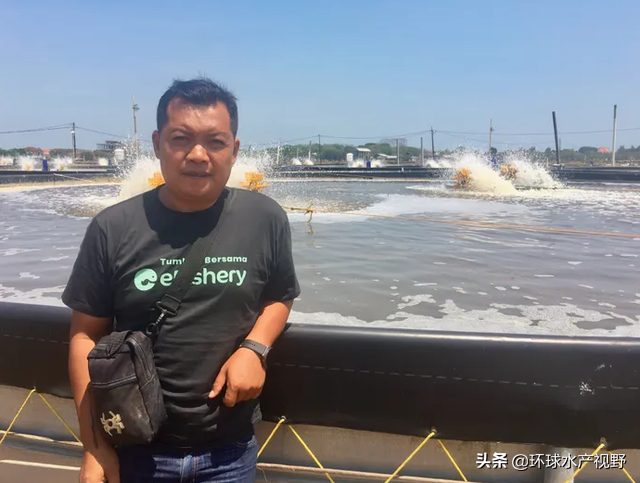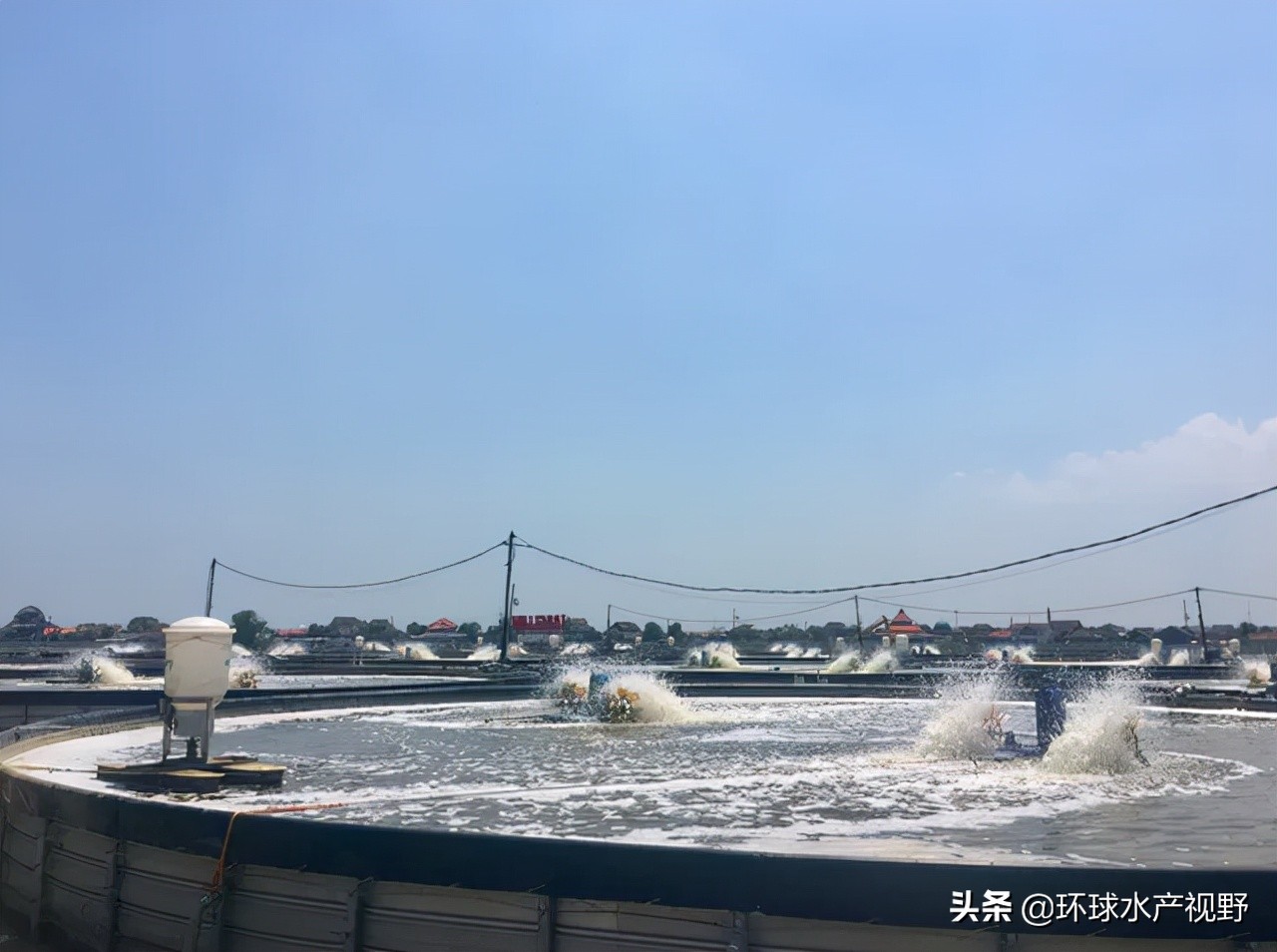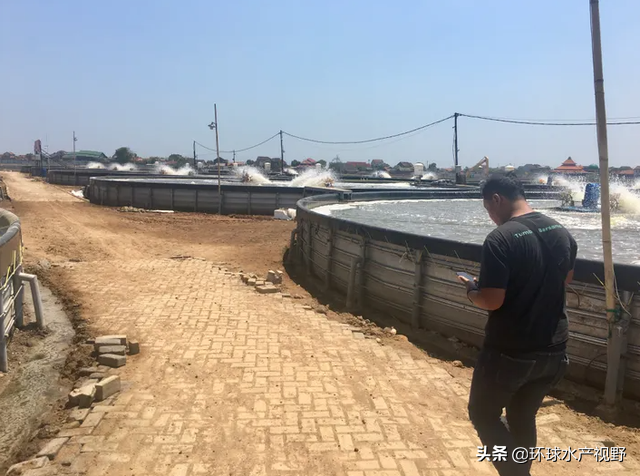A crop of shrimp can earn 2 million! Stories of Indonesian aquaculture experts
The expert introduced today is Ivan Sumantri, an Indonesian who has more than ten years of shrimp pond liner farming experience and is currently leading a 21st century shrimp farming project in Jepala, Indonesia, while training the next generation of Indonesian shrimp experts

Would you like to introduce yourself?
My name is Ivan Sumantri and I am 42 years old. I am currently working as a technical manager for the 21st Century Shrimp Farming (MSF) project at the Saltwater Aquaculture Development Centre (BADC) in Japala, Central Java, Indonesia. I am in charge of the implementation of this project, a pilot project that started earlier this year. I drafted the technical concept and then executed it with the shrimp industry experts and entrepreneurs we trained.
How long have you been in aquaculture farming?
I have been in shrimp farming since 2005, and before working at BADC Jepara, I also worked for a feed company in Indonesia for three years. Now I am the manager of MSF owned by BADC Jepara.
How big is your farm and what species do you mainly breed?
We farm Penaeus vannamei. The total area of the farm is about 15 mu, and there are 29 standardized ponds, each 7 meters in diameter. The first crop of prawns took 109 days to grow, with an average harvest of 2.2 tons per pond, with a minimum of 1.8 tons, yielding about 70 tons per hectare. This project has just been set up - the entire plant was constructed in early 2020 and completed in December 2020, with production officially starting in January 2021. This is the second crop of shrimp that has been put in, and we hope to reach 90 tons per hectare.
What kind of production system do you use?
Our farm is an intensive plant designed with relatively small circular ponds lined with HDPE pond liner. Each pond has two paddle wheels and a powered blower, and each pond can produce about 2.2 tons of shrimp. HDPE geomembrane is made from high grade polyethylene raw material,adding carbon black,antioxidant,anti-aging and UV resistance component. HDPE Geomembrana can be used as fish ponds, shrimp pond and other aquacultures. I would like to recommend Taian Gerui Geosynthetic Co., Ltd. We have cooperated for more than five years. I have visited their factory and leaved me a good impression. They insist on importing & using 100% virgin raw materials. The geomembrane has good anti-seepage performance and is durable and tear-resistant. As far as I know, their new factory is also under construction, a good partner Gerui is!

What's special about your factory?
Our farms use automated equipment to monitor water quality conditions and shrimp health in real time to determine every step of the operation. We call this project 21st century farming because the 21st century is closely related to concepts like Industrial Revolution 4.0 smart manufacturing.
We use IoT to send data to monitor all activity in the pond, including paddle wheel movement, oxygen levels and feed consumption, which is what differentiates it from a traditional farm.
Small circular pond designs are also different from traditional farms. We have a 15-acre site with a total of 29 ponds. A 15-acre traditional farm may only have two ponds. For us, the small ponds ensure that the virus doesn't cross-contaminate, and if a disease breaks out in one or two ponds, we can eradicate it quickly. If we only had two ponds, our shrimp would be wiped out if we accidentally got sick.
How do you want the farm to develop in the future?
So far, we have been monitoring shrimp feed consumption by inspecting feed trays. Shrimp feed consumption can be optimized if we can understand consumption levels by capturing data from underwater cameras. If the technology is successfully applied, it may even be possible to simulate the movement of shrimp to identify healthy, shelled or diseased shrimp. If we can develop a model, we can see all the conditions of the shrimp in real time. In the future I hope that we can have all the information in farming so that we can intervene appropriately and minimise the risk.
Please describe your training program on the farm
Fresh graduates in aquaculture generally lack practical skills and do not know where to look for skills development. Many fisheries graduates end up changing careers and we want to provide a sort of boarding school for future technicians to train them. Under the supervision of BADC, they are involved in all farming processes so that they have real first-line farming experience.
We conducted open recruitment in many universities in Indonesia, the first batch of 28 applicants, only 23 were admitted. It is hoped that after training, they can become highly skilled personnel who can design and manage shrimp farms from scratch. If they want to build their own farm, we will help them connect with investors. In the end, they can grow into industry elites and even change the entire breeding industry in Indonesia.

What is your ideal?
I think the aquaculture industry and the practitioners will be successful. We hope to cultivate a brand new team in the 21st century, applying technology to lower the threshold of shrimp farming. Many farmers want to invest in shrimp farming, but lack the technology, we do our best to give them confidence and let them master all the skills of shrimp farming from construction to harvesting.
What is your biggest challenge at work?
The biggest challenge is making sure everything is under control. For example, we can only understand aquaculture from theory at best, and many details of actual production are still unclear, and we do not know which factors affect the health of shrimp. I think it's important to have technology that allows us to understand each factor - but it's a tough task.
What is your greatest achievement?
Even though we only had one crop of prawns, this project was the greatest achievement of my career. In just one cycle, we can return the profit above the initial capital to the government. During the cycle, the government provided working capital of IDR 1.4 billion (EUR 82,800). We were able to report non-tax income of IDR 2.2 billion (EUR 130,200) to the government.
Why did you decide to go into aquaculture?
I studied at Gadjah Mada University, majoring in aquaculture. At that time, I didn't know what I wanted to do. In my last year of college, I took the initiative to apply for an internship opportunity at BADC Jepara, where I worked for three months, managing a shrimp farm, and learned about the huge size of a shrimp industry. profit. From then on, I decided to pursue a career in aquaculture, especially shrimp farming.
How do you think the breeding industry in Indonesia can improve?
There are at least three issues that need to be addressed. First, the aquaculture industry in Indonesia is not yet fully specialized. There are many low-skilled farmers, most of whom are not professionals. In addition, there are significant differences between large, medium and small farmers, with only a few farmers owning ponds of thousands of hectares. Finally, many farmers have not kept pace with current technological advancements. Technology is not promoted, it is only owned by some people, and it is difficult for most people to obtain technology.
Can you give other colleagues three suggestions?
1. Start by setting a realistic goal, calculate your goal based on available capital, infrastructure and carrying capacity, don't be too eager to scale up your farm. Most farmers want to expand their scale the first time they make money, hoping to make a bigger profit in the next cycle. But in my opinion, it's better to have a steady, sustainable profit before thinking about expansion.
2. Save some money for rainy days.
3. The farming industry is not 100% successful, I estimate that the success is less than 60%. I see too many farmers going broke due to disease outbreaks, cycle failures and other unexpected things.




